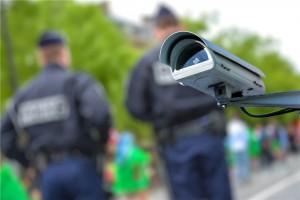How Law Enforcement Uses Face Recognition
Face recognition is now one of the most common biometric surveillance technologies, and in addition to its widespread commercial use, law enforcement agencies are increasing the scope and number of uses of face recognition. Today, in addition to fixed surveillance cameras in public places, law enforcement officers can also use mobile devices to scan and capture facial information in their areas of interest to identify people on their watch list. The facial information captured by surveillance cameras is available for real-time recognition functions. In addition to the normal environment using face recognition systems to assist law enforcement officers in governance, law enforcement can also use smarter algorithms for face recognition systems to identify people in the dark, as well as sketch matches generated from witness descriptions, and in the future, may even construct a person’s face image from a DNA sample.
However, face recognition technology is subject to objective use environments that are subject to error, and such face recognition technology is employed without meaningful oversight, without proper accuracy testing of the system as it is actually used in the field, and without enacting actionable legal protections against internal and external abuse. This leads to the development of unproven and inaccurate systems, which creates the potential for human rights violations.
Without appropriate and effective legal regulation, it is relatively easy for both public and private companies to build vast databases of faces and use them to identify and track people, tag them, and analyze them in real time, whether you move from one city to another, there is no hiding from them. In fact, some researchers’ have concluded that one in two Americans has access to face recognition databases that are accessible to law enforcement. Such unmonitored access is bound to produce rights violations.

Law enforcement agencies are making increasingly widespread use of facial recognition devices in their missions. Police start by taking photographs of arrestees’ faces and comparing them to local, state and federal facial recognition databases. Once an arrestee’s photo is taken, the photo is saved in one or more databases and later matched by police officers on another assignment search. Law enforcement can query these vast photo databases to identify photos taken from social media, CCTV, traffic cameras, and even faces of people they have identified from photos taken in the field, which are also used for real-time matching on “watch lists”.
With the widespread availability of mobile networks, law enforcement officers are using mobile face recognition devices such as smartphones, tablets or other portable devices to take photos of drivers or pedestrians at airports, border crossings and events such as the Olympics, and immediately compare the photo to one or more face recognition databases to try to identify and obtain valuable information in real time and efficiently. In addition, facial recognition has been frequently used for private spaces such as stores and movie theaters, and supporting these facial data matches are dozens of databases at the local, state and federal levels. An estimated 25 percent or more of all U.S. state and local law enforcement agencies have access to facial recognition searches on their own databases or those of other agencies.
According to Governing magazine, as of 2015, at least 39 states use facial recognition software in their Department of Motor Vehicles (DMV) databases to detect fraud. The Washington Post reported in 2013 that 26 of those states allow law enforcement to search or request searches of driver’s license databases, but that number may increase over time.
Databases are also found at the local level, and these can be very large. The Pinellas County Sheriff’s Office in Florida, for example, may have one of the largest local databases for facial analysis. This database is searched about 8,000 times a month by more than 240 agencies, according to a Georgetown University study.
The federal government has several facial recognition systems, but the database most relevant to law enforcement is the FBI’s Next Generation Identification database, which contains more than 30 million facial recognition records. the FBI allows state and local agencies to access this database, which means no one at the federal level is checking individual searches. In turn, states allow the FBI access to their own criminal facial recognition databases.
The FBI also has a team of employees that specialize in facial recognition searches called the Facial Analysis, Comparison, and Evaluation (“FACE”) service. the FBI has access to over 400 million non-criminal photos from state DMVs and the State Department, and 16 U.S. states allow Face access to driver’s license and ID photos.
Given the large number of DMV databases that use face recognition, and the number of Americans whose photos are in the State Department passport database and U.S. visa holders, Georgetown University estimates that nearly half of all U.S. adults have access to at least one face recognition database.
Post time: Sep-29-2021

